I know safety comes first. Many people ask me which welding machine is the safest. The question is not simple. Each process has risks. I see fear about burns, smoke, glare, and power. I use a clear plan. I reduce risk by design, setup, and training. Then I pick the right tool.
The safest welding machine is the one with strong safety controls, proper PPE, and a stable process. For most light metal work, a handheld laser welding machine with Class 4 controls, correct shielding, training, and interlocks can be very safe. The key is risk control, not only the tool.
I run Kirin Laser. I design laser welding systems with safety in mind. I build them for real shops, not labs. I work with buyers who want low risk and high speed. I keep the setup simple. I keep the instructions clear. I add safety at every step. I will share what I use in my own work.
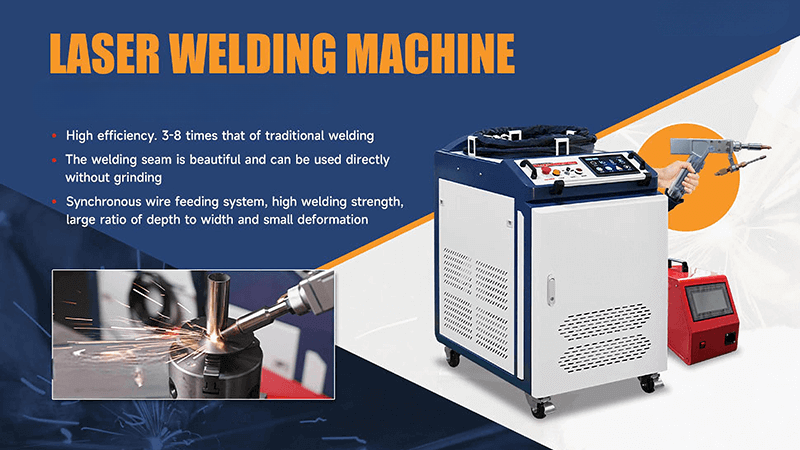
What type of welding is the safest?
We all want a short answer. We also want clean welds, low smoke, low heat, and fewer burns. I look at risk per hour of work. I compare processes with the same job size. I count burns, fumes, arc glare, heat distortion, and fire load. I also look at operator stress. A calm operator makes safer choices.
The safest type is the one that keeps energy controlled and exposure low. Handheld laser welding can be very safe when you use Class 4 laser controls, certified eyewear, proper shielding, and trained staff. It has low fume, low spatter, and low heat input compared to many arc methods.
Dive Deeper: Compare Safety By Hazard
Key Hazards I Manage
- Energy at the weld pool
- Light exposure that can harm the eyes and skin
- Fume and gas in the air
- Heat and spatter that can burn or start a fire
- Electrical risk
How I See Each Process
- Laser welding: Class 4 light1 is dangerous. I use enclosures when I can. If I go handheld, I use curtains, eyewear that matches the wavelength, and interlocks2. I also use training and job rules. I like the low spatter and the low heat affected zone. This cuts fire risk. Fumes are low, but I still use local exhaust.
- MIG: Easy to start. Arc glare is strong. Spatter is common. Fumes are higher, so I use strong ventilation3. Fire risk is higher because of sparks and hot slag.
- TIG: Clean arc and good control. Some UV risk. Low spatter. Fumes depend on material but are lower than MIG. It is slower, so exposure time can be longer.
- Stick: Tough and simple. Fumes and spatter are high. Slag is hot. Fire risk grows in tight spaces.
What I Change To Make Laser Safer
- I fit a Class 4 sign and access control.
- I use eyewear with OD that matches the laser wavelength.
- I use a guarded nozzle and a two-step enable.
- I add a bright work light so the operator does not seek better view by unsafe angles.
- I train the operator to set spot size and power right. Overshoot is not safe.
- I place laser curtains or portable screens to block stray beams.
- I add a fume arm4 close to the weld. I check air flow with a simple card test.
Short Score Table
| Process | Light Risk | Fume | Spatter | Heat Distortion | Fire Load | Control Level |
|---|---|---|---|---|---|---|
| Handheld Laser | High if unguarded; low with PPE and screens | Low | Very low | Very low | Low | High (with interlocks) |
| MIG | High | High | High | Medium | Medium-High | Medium |
| TIG | Medium | Low-Medium | Low | Low-Medium | Low-Medium | High |
| Stick | High | High | High | Medium | High | Low-Medium |
I saw a shop cut injury reports by half after moving thin stainless work from MIG to handheld laser. They added curtains and eyewear. They also made a five-step start checklist. The team felt calm and safe. Output went up. The welds looked great.
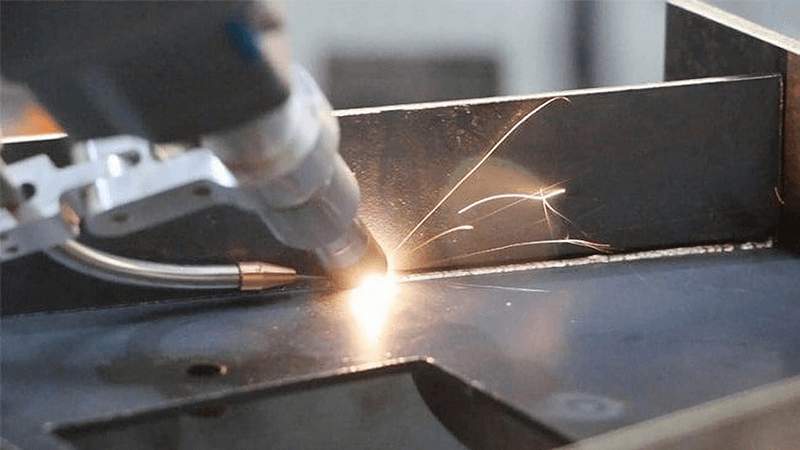
What type of welding is best for home use?
I get this a lot from hobby users and small shops. Home garages have space limits. They also have power and ventilation limits. Safety must fit that reality. I do not want a complex setup for a one-car garage. I want a clean, simple, and safe plan.
For home use, the best choice is the process that matches your jobs and your space. MIG is often simple for beginners. TIG gives clean control for thin parts. A handheld laser can be great for thin metals if you follow strict Class 4 safety and use curtains, eyewear, and a safe corner with access control.
Dive Deeper: Home Shop Checklist And Picks
Space And Power
In a home garage, I first check the power. Many MIG units run on 120V. TIG can need more power if you use AC for aluminum. A handheld laser welding machine5 from Kirin Laser needs more power and proper grounding. It is not a toy. I also check for room to place curtains and a fume arm. I set a safe zone that a kid or pet cannot cross.
Fume And Noise
MIG and stick can make more fumes. This needs a real extractor and open air flow paths. TIG makes less fume but still needs exhaust. Laser welding makes low fume on thin stainless and mild steel. It still needs local exhaust. It makes little noise. That is nice at home.
Safety Controls For Home Laser
With handheld laser at home, I use a strict plan. I hang laser curtains around the work. I post a Class 4 warning sign. I keep the key switch under my control. I store the eyewear near the door. I use a two-step enable, so the beam does not fire by accident. I log who uses the tool. I test the interlocks once a week.
Use Case Picks
- Thin stainless shelves, small brackets, kitchen parts: handheld laser with low power and a wobble head can give fast, clean joints with little heat marks.
- Small custom bike parts: TIG works great. Laser can also help with thin tabs, but I keep eye safety tight.
- Thick farm repairs: stick or MIG still makes sense.
Quick Compare For Home
| Use Case | Best Pick | Why |
|---|---|---|
| Thin stainless decor | Handheld laser or TIG | Clean, low heat, nice finish |
| Simple steel frames | MIG | Easy, fast, cheap wire |
| Thick outdoor repair | Stick | Rugged, simple |
| Precision thin tabs | TIG or laser | Control and low warp |
I also tell people to start with a class on shop safety6. I show them a simple start checklist. I show them how to place the fume arm. I show them how to keep cables neat. A neat garage is a safe garage.
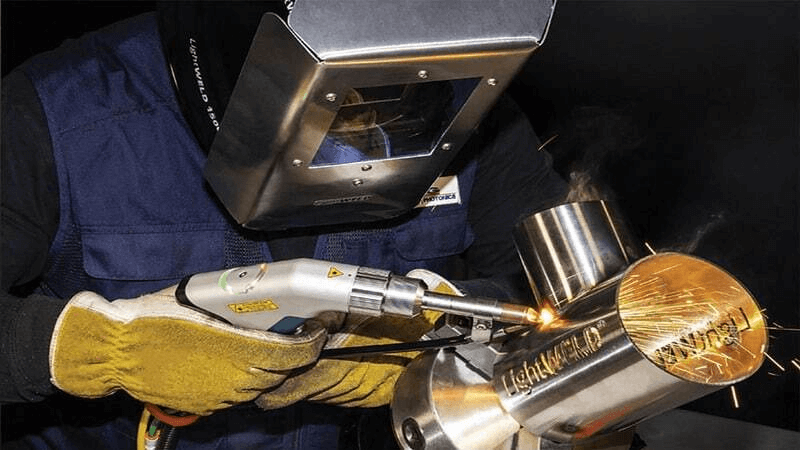
Which welding is strongest?
People use “strongest” in a broad way. I break it down. I look at joint design, base metal, filler choice, and process control. A good joint has enough strength and good shape. The process matters, but the setup matters more.
There is no single “strongest” process. Strength comes from the joint design, base metal prep, fit-up, and correct parameters. Laser welding can match or exceed TIG on thin parts. MIG and stick can be stronger on thick sections with proper prep and filler. The joint decides the winner.
Dive Deeper: What Decides Weld Strength
The Real Factors
- Base metal composition and thickness
- Joint design: lap, butt, fillet, edge
- Fit-up and gap control
- Heat input and cooling rate
- Filler match and dilution
- Post-weld treatment
Laser Welding Strength On Thin Metals
In my own tests at Kirin Laser, I weld 0.8–3.0 mm stainless. I prepare edges clean. I clamp the parts well. I set the spot size and wobble width to bridge gaps. I tune power and speed to get full penetration without burn-through. The tensile tests show joint strength7 near the base metal strength. Distortion is low, so the part stays true. This keeps the load path clean. That makes the real strength high.
When MIG Or Stick Wins
On thick structural steel, a groove with a multi-pass MIG or stick weld with matched filler can build a large sound joint. You can add more metal and spread the load. Laser can do this with hybrid laser-MIG or with high power keyhole lasers. In a small shop, a standard handheld laser is not for thick structural joints.
TIG For Critical Fit And Ductility
TIG gives fine control8. For small pressure vessels and food-grade parts, I see strong and ductile joints. Laser matches TIG on thin stainless. TIG still rules when the joint shape is complex and access is tight.
Quick Compare On Strength
| Process | Thin Metals | Thick Metals | Gap Tolerance | Distortion |
|---|---|---|---|---|
| Handheld Laser | Very strong with good prep | Limited without hybrid | Low–Medium with wobble | Very low |
| TIG | Very strong | Medium | Low | Low–Medium |
| MIG | Strong | Very strong | Medium–High | Medium |
| Stick | Strong | Very strong | Medium | Medium–High |
I saw a client in auto work switch to handheld laser for thin stainless brackets. Their failure rate dropped. The parts stayed flat, so the bolts lined up. The joint strength matched the spec. They also saved time on straightening. Strength is not just a number. It is also shape and fit.
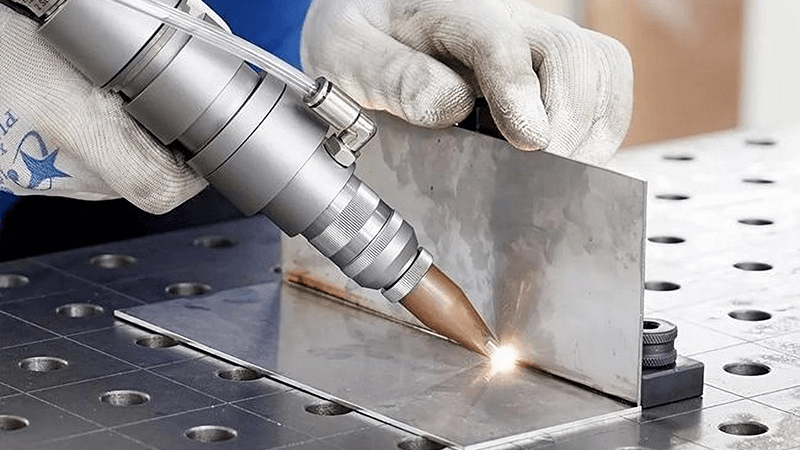
What is the best brand of welding machine?
People expect me to say my brand. I will be honest. The best brand depends on your needs, your support plan, and your budget. I sell machines, but I also build long relationships. I do not push a tool that does not fit the job.
The best brand is the one that gives reliable performance, fast support, clear training, and long-term parts supply. For handheld laser welding, Kirin Laser offers strong safety features, custom presets, and global support. You should still match the model to your real workload and your team.
Dive Deeper: How I Judge A Brand
Core Criteria I Use
- Safety design9: interlocks, key switch, E-stop, lens protection, gas checks
- Performance: stable beam10, clean power control, repeatable presets
- Usability: clear UI, quick start, memory for jobs
- Service: parts stock, remote help11, training, warranty
- Total cost: machine price, consumables, power draw, uptime
How Kirin Laser Designs For Safety
At Kirin Laser, I start with Class 4 controls. I add a two-step trigger. I add a key switch. I link the gas flow to the enable. I protect the lens with quick-change tips. I set a fault to safe. If the cable bends too much, the power shuts off. The UI shows large icons for PPE and checks. I ship a starter kit with eyewear that matches the laser wavelength. I add a bright work light by default.
Performance And Control
I use stable diodes with tight power control. I tune wobble patterns for real joints: lap seams, outside corners, fillets. I save presets for common alloys. New users pick a preset and run tests. Advanced users can change spot size, frequency, and duty cycle. The goal is simple and safe control. The machine helps the operator, not the other way around.
Service And Parts
I keep core parts in stock. I offer remote setup calls. I share a job checklist and a safety walk-through. I train your team on eyewear and curtains. I keep PDFs and short video guides. I also partner with local techs for on-site service. I know that a stopped line costs more than the purchase price.
Brand Compare Snapshot
| Brand Factor | Kirin Laser | Generic Import | Legacy Arc Brand |
|---|---|---|---|
| Safety Controls | Strong, Class 4 focus | Mixed | Strong for arc, not laser |
| Ease of Use | High, presets and guides | Low–Medium | High for arc |
| Support | Global remote + partners | Varies | Strong local |
| Cost | Competitive | Low–Medium | Medium–High |
| Laser Focus | Yes | Sometimes | Rare |
I will say this clearly. If you need a laser welding machine for thin metals with strong safety and support, Kirin Laser is a good fit. If you only need stick welding for farm repairs, get a simple stick welder from a known arc brand. The right pick builds trust.
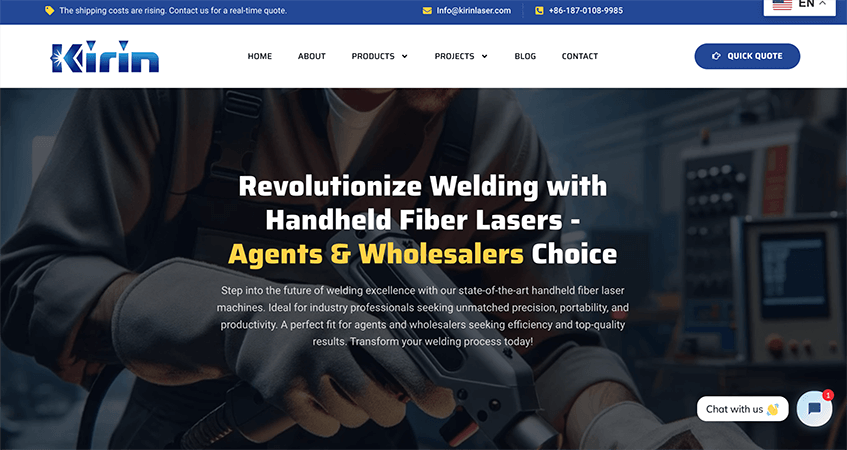
What type of welder should a beginner use?
A beginner needs fast wins. I want the first bead to look decent. I want safe habits to form early. I do not want complex setup. I do not want a scary tool. I want the learner to feel in control.
A beginner should start with a process that is easy to set up and easy to see. MIG is often the fastest start for general steel. For thin stainless and clean work, a handheld laser with presets and strong safety controls can be beginner-friendly, if training and PPE are in place.
Dive Deeper: First Steps And Safe Habits
What A Beginner Needs
- Clear view of the joint
- Simple controls
- Low cleanup
- Quick feedback
- Safety that is hard to bypass by mistake
Why Many Start With MIG
MIG has a steady wire feed. The arc is easy to keep. The bead forms fast. It is great for learning torch angle and travel speed. The PPE is simple: helmet, gloves, jacket, and a fume plan. The downside is spatter and more fume. Fire risk is higher. You must plan the work area.
Where Handheld Laser Helps A New User
With the right setup, laser can be simple. I set the machine to a preset. I use a small wobble to bridge gaps. The bead is clean. There is almost no spatter. The operator sees the seam with a bright work light. The key is safety. I train the new user on eyewear, curtains12, and the enable steps. The machine enforces interlocks. The job feels calm. The user makes steady progress.
My Client Story
A client in the auto sector had two issues. Weld quality was not steady. Operators were nervous after burn events on an older MIG line. We replaced part of the line with handheld laser welding13 units. We set up curtains, eyewear, and a five-step start. The team got clean welds with low heat distortion. The operators felt safe. Their confidence grew. The downtime fell. The company saw more output with fewer reworks. This was not magic. It was a safe system.
Beginner Path Plan
| Stage | Process | Goal | Safety Focus |
|---|---|---|---|
| 1 | MIG on mild steel | Learn torch angle, speed | Helmet, jacket, fume |
| 2 | TIG on thin parts | Learn puddle control | UV, gas, clean area |
| 3 | Handheld laser with presets | Learn seam following | Class 4 PPE, curtains |
| 4 | Choose specialty | Match process to parts | Habit checks, checklists |
I guide beginners to build habits. I use checklists. I keep sessions short. I review PPE each time. I show them how to set work clamps. I talk about cable paths. I measure air flow. These steps feel basic. They make a big difference.
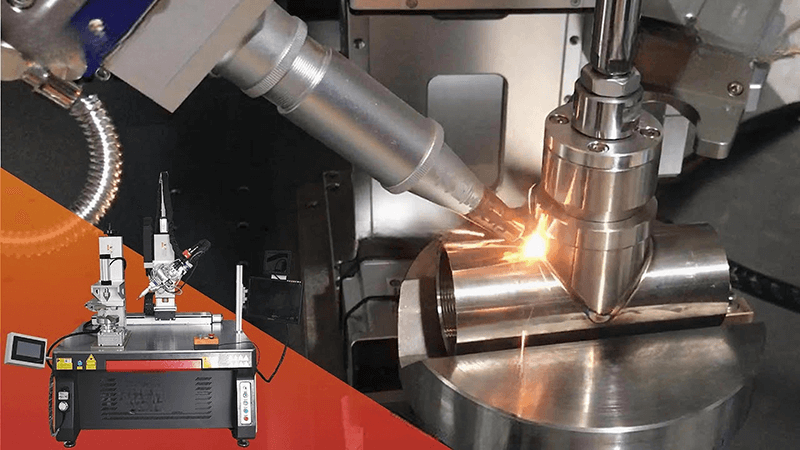
Conclusion
Safety is not a single feature. Safety is a system. I pick the process that fits the job and the space. I set strong controls. I train the team. For thin metals, I use handheld laser welding14 with strict Class 4 safety. For other work, I use MIG, TIG, or stick. I keep the plan simple. I aim for clean welds, low heat, and calm operators. That is how I get safe and steady results.
-
Understanding the risks associated with Class 4 light can help you implement better safety measures in welding. ↩
-
Discover how interlocks can prevent accidents and improve safety protocols in laser welding operations. ↩
-
Explore how proper ventilation can significantly reduce fume exposure and enhance workplace safety during welding. ↩
-
Learn about the importance of fume arms in controlling hazardous fumes and maintaining a safe working environment. ↩
-
Explore the advantages of handheld laser welding machines for precision and efficiency in various projects. ↩
-
Learn essential shop safety practices to ensure a safe working environment while welding. ↩
-
Understanding joint strength is crucial for ensuring the durability and reliability of welded structures. ↩
-
Exploring TIG welding techniques can enhance your skills in achieving precise and high-quality welds. ↩
-
Explore this link to understand essential safety features that ensure operator protection and compliance in laser welding. ↩
-
Learn about the importance of a stable beam in laser welding and how it enhances precision and quality in your projects. ↩
-
Discover how remote assistance can improve your operational efficiency and reduce downtime in laser welding. ↩
-
Discover essential safety measures for laser welding, ensuring you use eyewear and curtains effectively to protect yourself and maintain a safe work environment. ↩
-
Explore the advantages of handheld laser welding, including safety and ease of use, which can enhance your learning experience. ↩
-
Find the best laser welding machine and laser welding solutions from Kirin Laser, clicking this link to get all your needs for your business. ↩





